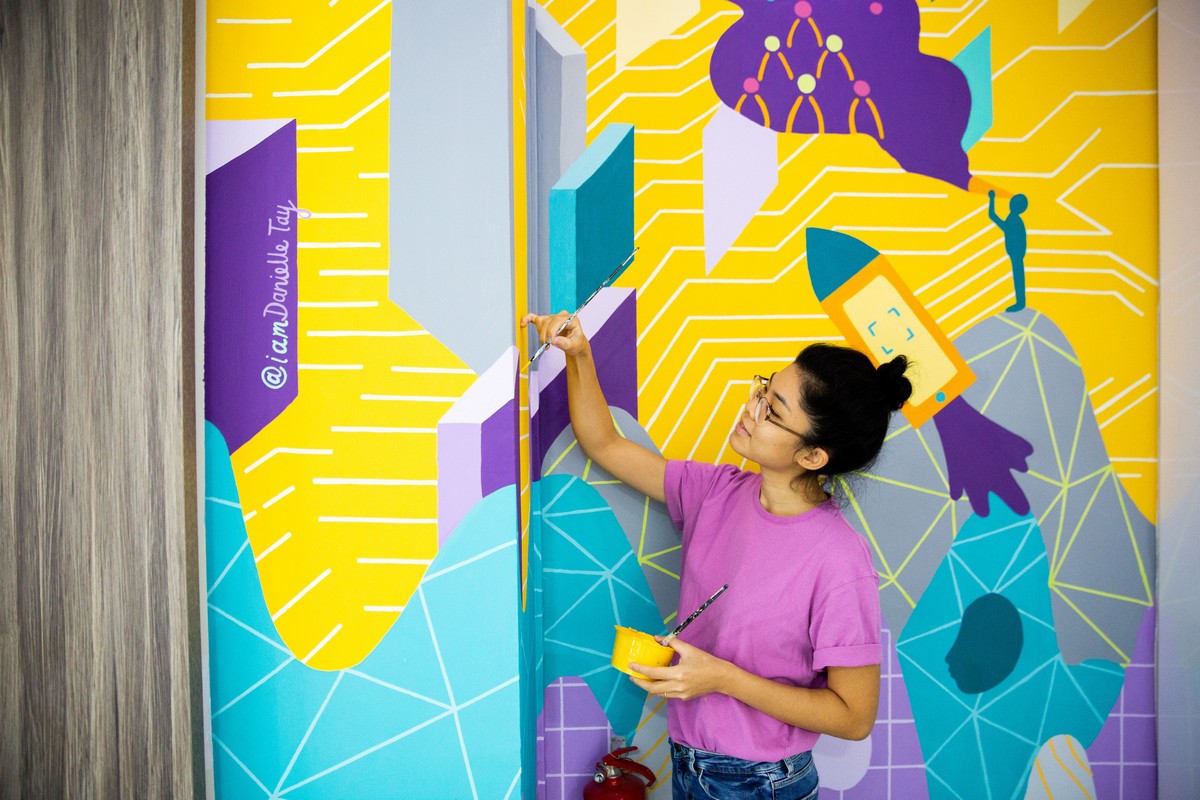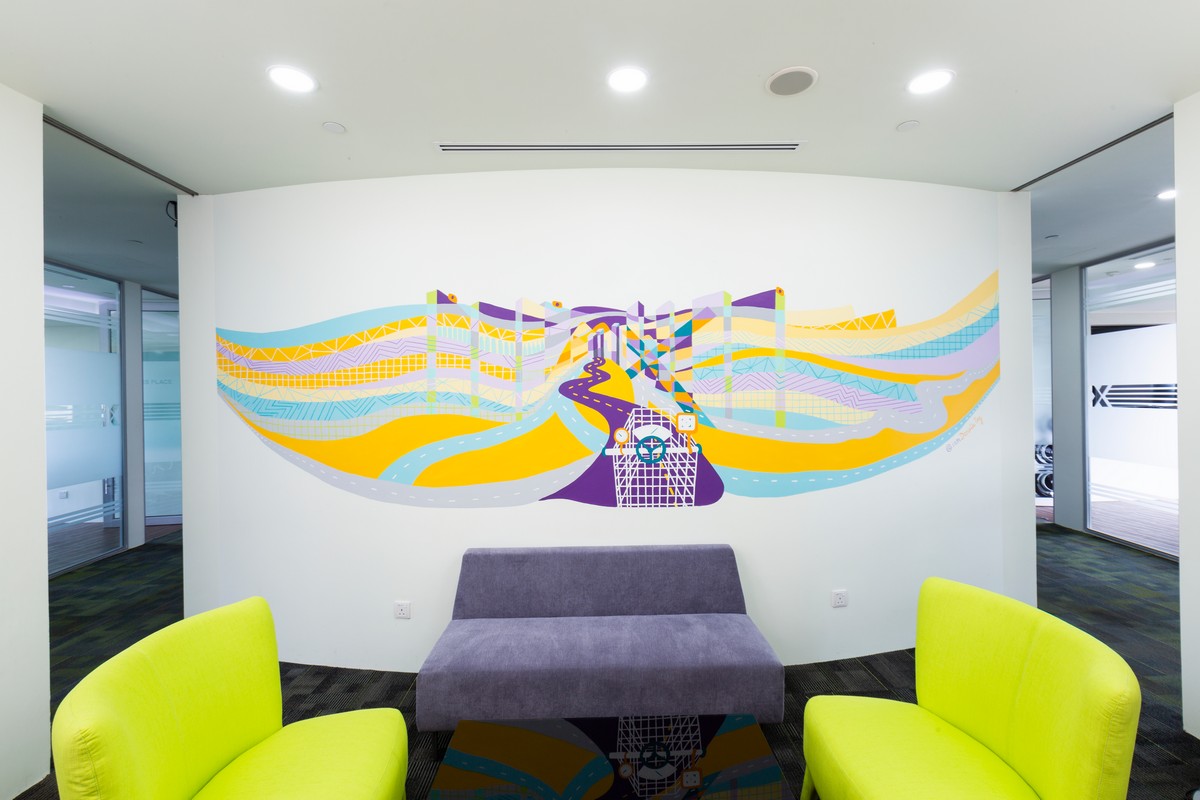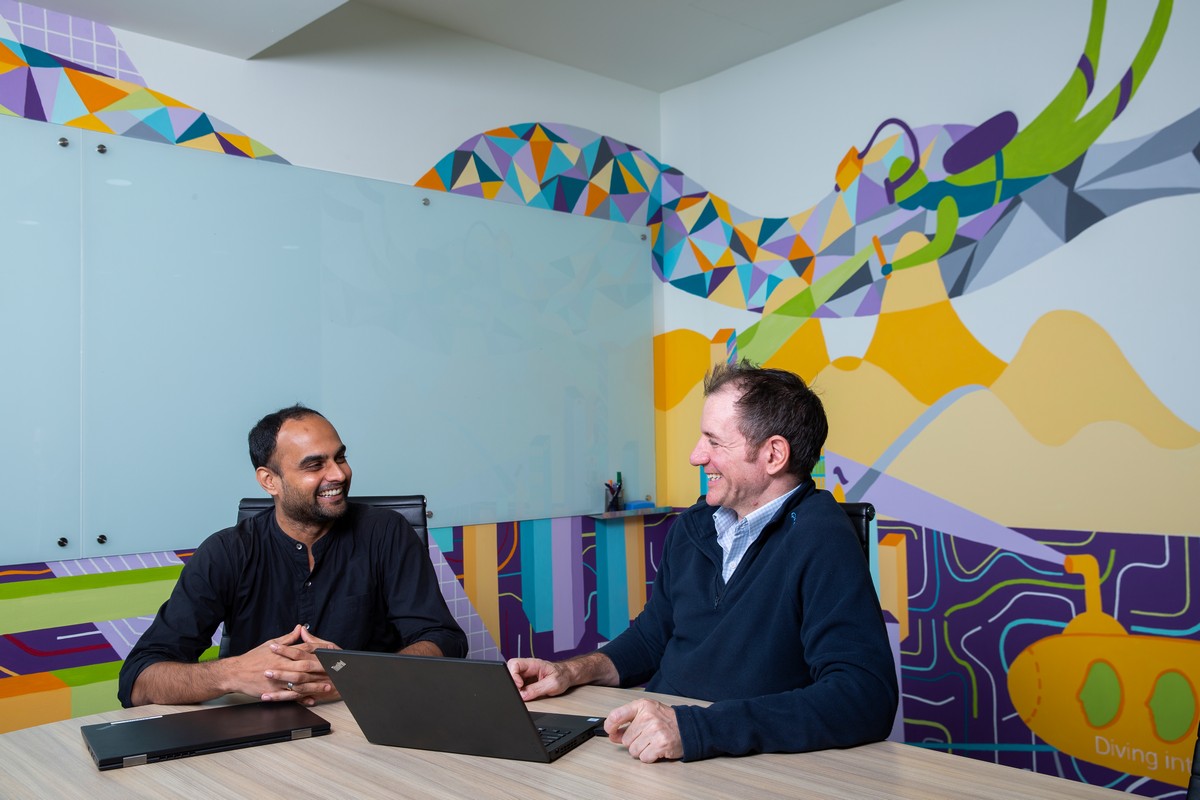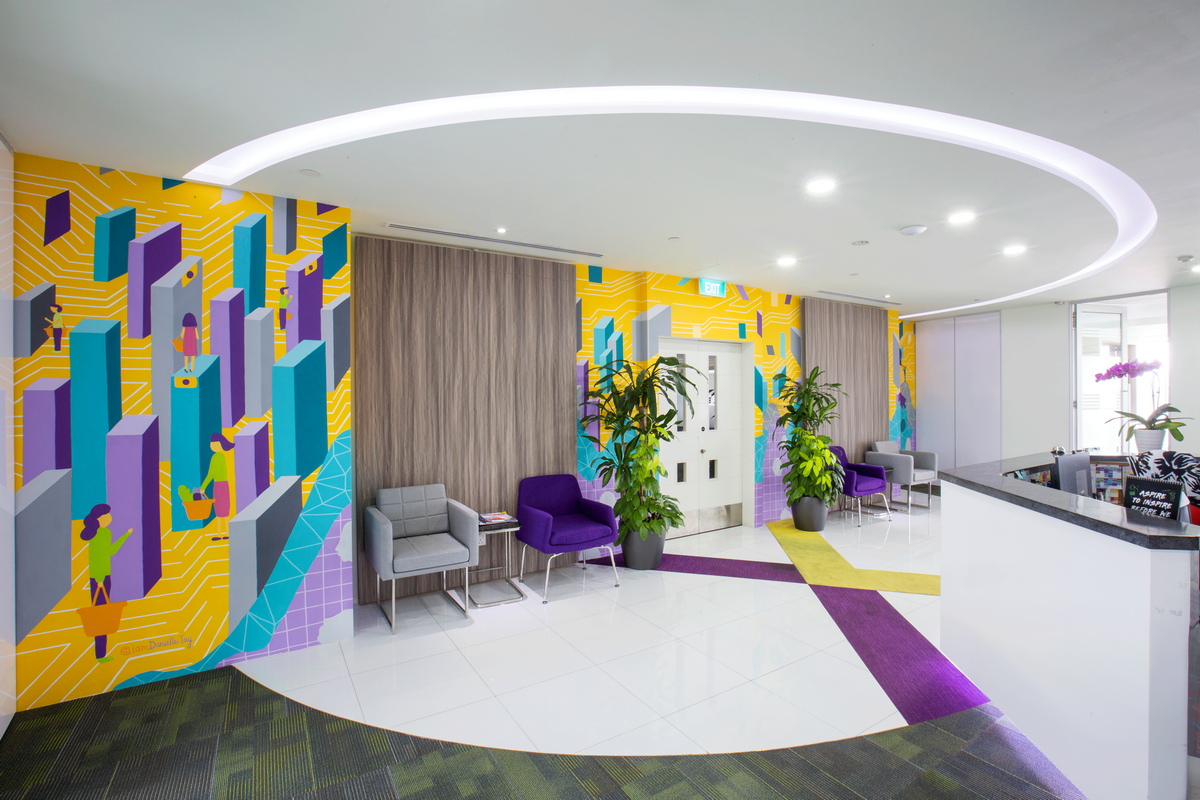When visual artist Danielle Tay entered the Trax Singapore office, she sensed an unmistakable air of cheer and positivity. The people, the ambiance and the facilities all embody what it means to be part of a modern workplace. To supercharge this energy and vibrancy, Danielle fused powerful messaging and riveting art in a set of four murals at our headquarters. Manu Krishna from Trax chatted with Danielle about her artistic inspiration, creative collaboration, and her unique approach to the Trax project.
Manu: Tell us a little bit about yourself. What inspired you to be a visual artist?
Danielle: I’ve always been involved in art since I was a kid; I knew I wanted to do something creative. When I entered art school, it was more geared toward design – I wanted to enter the advertising field. But after the first year, I gravitated toward fine-art painting. I just loved the process of painting and creating. After I graduated, I came back to Singapore, and started teaching and practicing visual art.
Drawing is a way of thinking for me. I compare it to playing music or writing; it’s the natural way I process my feelings and thoughts about everything around me. And I really just enjoy looking at beautiful art!

Manu: What ignites the creative process for you?
Danielle: With today’s technology, there’s just so much information coming at you all the time; it can be difficult to notice things. Our minds are attuned to scrolling through our Twitter feeds, constantly switching contexts and struggling to stay still. But every now and then, there’s something unseen about a place or a situation that tends to stay with you. Let’s say, for example, that I’m travelling, and there’s a place I visit that’s unusually significant. When I’m there, I notice this, but that thought recedes into my memory and I continue on with my day. Then maybe a month or two later, I remember that moment or that place for whatever reason – it may not be a tangible reason; it could be the energy of the space – and I try to make sense of it. Why was I drawn to that space or that place? What was different about it that it stood out? It could be anything from a place to a single moment or a conversation. I think that’s what I grasp onto in my mind, filtering it through the rest of the things that I have going on. And when I sit down to draw, I take inspiration from those moments and try to re-create that same atmosphere or feeling. So that’s where the spark is for my work.

Manu: I know visual artists don’t always like to be bracketed. But does your work usually have an overall theme or underlying philosophy?
Danielle: It might sound a bit strange for a visual artist to invoke an economics-related parable. In his famous essay, That which is seen, and that which is not seen, French economist Frédéric Bastiat points out that to evaluate the consequences of any action, we need to look at both its seen effects, which are often the rationale behind the action, and its unseen effects, which include unintended consequences and ripple effects. I’m fascinated by this concept. I aim to depict these unforeseen, uncertain parts of life – things that don’t always have a rational, straightforward explanation – in a visual manner.

Manu: How did you approach Trax’s mural project?
Danielle: The Trax office space was key because it helped define how I would respond to it and what I could do with it. A mural’s objective is also very important.
Trax wanted a way to reflect in the workplace the energy of its people and the audacity of its mission to digitize retail.
I also used Trax’s brand colours and iconography to represent its products, such as the neural-network pattern. These formed the project’s framework. From there, I brainstormed a concept that would suit the reception area, the boardroom, the demo room and the social area. The main anchor for the whole project was ‘diving into data.’
In one mural, for instance, the diver is going beyond the surface – digging deeper, beyond what people see as retail. That under that surface, there’s so much more to discover and use to grow your business. That’s everything Trax is doing with image recognition and artificial intelligence – going beyond the obvious and providing the tech and the data that help you see details you’d normally miss.
Usually, I ask, ‘What would you like to feel when you enter the space?’ In this case, when it’s energy and vibrancy, the Trax colours already worked quite well with that theme. And apart from digitizing retail, Trax is bridging the gap between online and offline spaces. So visually, I tried to combine elements of brick-and-mortar stores and lots of shelves with a close-up of a circuit-board-type setting, which makes it very modern.

Manu: Do you have any favorite artists or favorite art projects in public spaces?
Danielle: I have many favorite artists, but one of the main ones would be Henri Matisse. I love his entire career; it’s quite different, depending on what timeframe you’re looking at in his lifetime. Then there’s David Hockney, who I think is incredibly talented and also has a very wide scope. I love artists who work across different mediums, materials and methods – painting, drawing, photography, sometimes sculpture. Another artist would be Frank Stella. His work is in the lobby of a building near Millennial Walk. It’s just larger than life. It takes over the entire space as you enter. Apart from the visual, it’s their philosophy toward art and also their process of making that inspire me.

Learn more about life at Trax and how you can join our team.
Give us some info so the right person can get back to you.